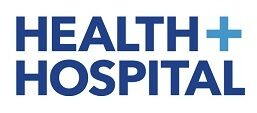
What Often Goes Wrong — Why Hospital Fall Prevention Efforts Falter
Every year, between 700,000 and 1,000,000 patients experience falls while in the hospital. Of those, 30–35% suffer serious injuries that prolong their stay by around six days on average. Despite many hospitals deploying fall prevention programs—medication reviews, environmental changes, staff training—many such efforts lose momentum over time. Below are six common pitfalls that undermine these programs, followed by suggestions to help make prevention strategies stick. Read More
Six Reasons Prevention Programs Break Down
- Incomplete or Outdated Risk Assessment
Hospitals sometimes fail to reliably identify which patients are at elevated risk of falling. If assessments miss key factors—or aren’t updated as a patient’s condition changes—patients may be misclassified (often as low risk), leaving them vulnerable to harm. - Weak Communication and Poor Team Coordination
Even if assessment tools exist, success depends on sharing findings and acting on them across all members of the care team. Without consistent communication channels, a strong teamwork culture, or standardized workflows (checklists, huddles, etc.), preventive measures may be inconsistently or improperly followed. - Limited Staff Training
It isn’t enough to issue policies—staff need hands-on familiarity with assistive devices, safe patient movement, and strategies for helping mobility. When people haven’t been trained (or refreshed regularly), risk remains high because practices slip or are done incorrectly. - Lack of Patient & Family Involvement
Preventing falls isn’t just a staff-only task. Patients and their families should be partners: educated about risks, empowered to ask questions and request help, encouraged in mobility and strength activities, and instructed in how to use assistive tools safely. Without this engagement, even the best policies may fail at moments when patients try to help themselves without realizing the risk. - Insufficient Resources
A comprehensive prevention program needs technology, equipment, suitable assistive devices, enough trained staff, and continuous investment. When resources are stretched—staffing, funding, or tech—some units end up underprepared or unable to sustain preventive measures over time. - Failure to Track & Analyze Data
Data is essential for understanding what’s working. Hospitals must collect both outcome data (fall rates, injuries) and context (patient age, mobility level, times/locations of falls, etc.). Without tracking trends, measuring impact, and adjusting based on evidence, programs can drift or become reactive rather than proactive.
How to Build a Fall Prevention Program That Lasts
To improve odds of long-term success, organizations should take steps that address these pitfalls:
- Use robust, dynamic risk assessment tools and ensure assessments are repeated whenever a patient’s situation shifts (e.g. after surgery, changes in medication, mobility status).
- Standardize communication: Use team meetings, checklists, handovers that explicitly include fall risk. Make sure every member of the care team (nurses, aides, physicians) knows their role.
- Invest in continuous education: Not just initial training but refresher sessions. Include hands-on practice with assistive gear; simulate risky scenarios.
- Bring patients & families into the process: Provide materials, explain risks clearly, encourage active participation; make safety plans that empower patients rather than make them passive.
- Ensure adequate infrastructure and staffing: Don’t try to stretch programs without backing. Where possible, leverage technology (virtual monitoring, cameras, alarm systems) and make sure equipment is available and in good condition.
- Make data your guide: Establish metrics, collect and review them regularly. Use data analytics to identify hotspots (times or locations with more falls), evaluate which preventive steps are most effective, and adjust approaches accordingly.
Why It Matters
When fall prevention works, hospitals see meaningful benefits: fewer injuries, shorter stays, less need for rehab, better patient well-being. Also, staff feel safer and more supported. Preventing just a fraction of falls can translate into cost savings and better overall outcomes—not just for patients, but for hospital operations too.
Fall prevention isn’t a one-and-done initiative. It must be embedded into everyday practice, backed by strong communication, data, engagement, and resources. With those in place, the goal of safer hospital environments becomes not just aspirational, but achievable.





